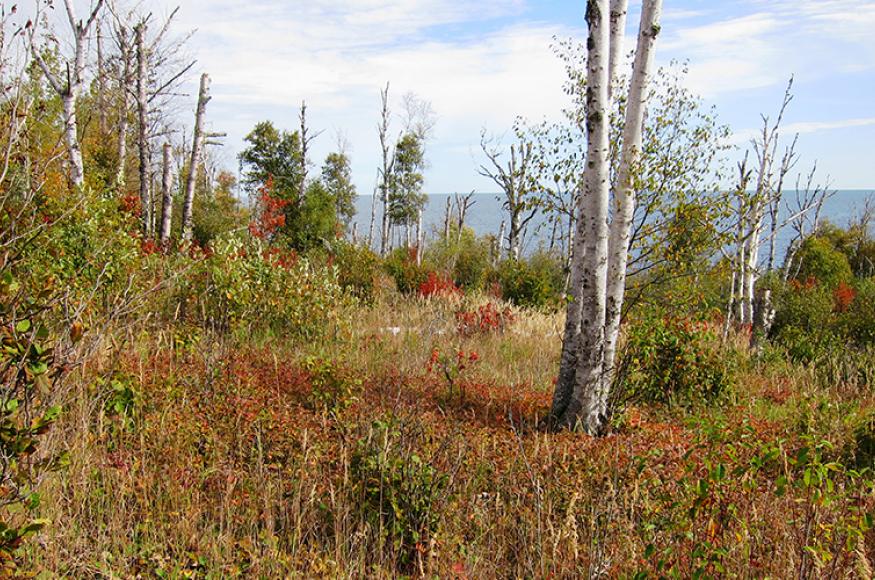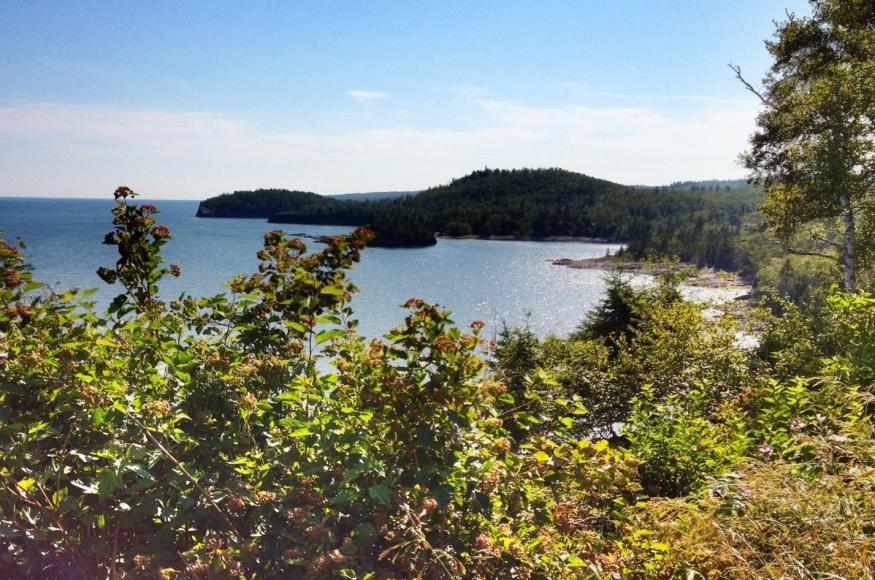Project Area
 Many forests along Minnesota’s North Shore are in a degraded condition, with old and dying paper birch and aspen stands that are highly vulnerable to transitioning to brush and grass. Forests along the North Shore were affected by logging followed by severe fires in the early 1900’s, which resulted in the replacement of the conifer-dominated forest with birch and aspen. The more recent combination of increasing stress from extensive deer browsing, warming and drought, and insect pests has limited tree regeneration of the birch and aspen. The Nature Conservancy in Minnesota and the Minnesota Department of Natural Resources are in the planning phase of a project focused on reforesting thousands of acres in the North Shore Highlands of Lake Superior in Northeast Minnesota. Approximately 40 sites totaling more than 2,200 acres located across six State Parks were identified as good having good potential for reforestation. Out of these, a 140-acre parcel of degraded and understocked aspen-birch forest in Split Rock Lighthouse State Park was selected for initial consideration with Adaptation Workbook.
Many forests along Minnesota’s North Shore are in a degraded condition, with old and dying paper birch and aspen stands that are highly vulnerable to transitioning to brush and grass. Forests along the North Shore were affected by logging followed by severe fires in the early 1900’s, which resulted in the replacement of the conifer-dominated forest with birch and aspen. The more recent combination of increasing stress from extensive deer browsing, warming and drought, and insect pests has limited tree regeneration of the birch and aspen. The Nature Conservancy in Minnesota and the Minnesota Department of Natural Resources are in the planning phase of a project focused on reforesting thousands of acres in the North Shore Highlands of Lake Superior in Northeast Minnesota. Approximately 40 sites totaling more than 2,200 acres located across six State Parks were identified as good having good potential for reforestation. Out of these, a 140-acre parcel of degraded and understocked aspen-birch forest in Split Rock Lighthouse State Park was selected for initial consideration with Adaptation Workbook.
Management Goals

Split Rock Lighthouse State Park is managed by the MN DNR to preserve, perpetuate, and interpret natural features as mandated by state statutes4. Part of this mandate is achieved through restoring desirable species and ecological communities. Given this directive, long-term management goals for the project area include establishing resilient natural communities and providing habitat for rare species and species of greatest concern by promoting an older forest with complex structure and high tree species diversity. The collaboration between TNC and MN DNR focused on planning for reforestation, with the additional benefits of carbon sequestration. These carbon stock gains would greatly increase sequestration on the project area relative to the current condition of the forest that, without intervention, will likely continue to decline from age-related mortality and be replaced by woody shrubs and grass. Two sites were selected totaling 140 acres; site A is a high-use area adjacent to roads, trails, buildings, and a campground, while site B is a natural area not significantly impacted by park visitor use.
Climate Change Impacts
Challenges and Opportunities
Challenges
Opportunities
Adaptation Actions
Project participants used the Adaptation Workbook to develop highlight several adaptation actions with carbon benefits that were included in initial plans for this project, such as reforestation through planting long-lived conifers to increase site stocking, as well as clearing brush to reduce competition. Additionally, using the menu allowed managers to alter some tactics, such diversifying the planting list and modifying the location of conifer planting sites. Depending on the guidelines appropriate for restoring the two sites considered, managers added new tactics, such as using southern genotypes of species currently found in the region, and planting species that occur further to the south (site A only). Adaptation actions include:
6.2 Increase stocking on well-stocked or understocked forest lands
6.6 Promote species and structural diversity to enhance carbon capture and storage efficiency
7.2 Alter forest composition or structure to maximize carbon stocks
7.4 Introduce species or genotypes that are expected to be adapted to future conditions



